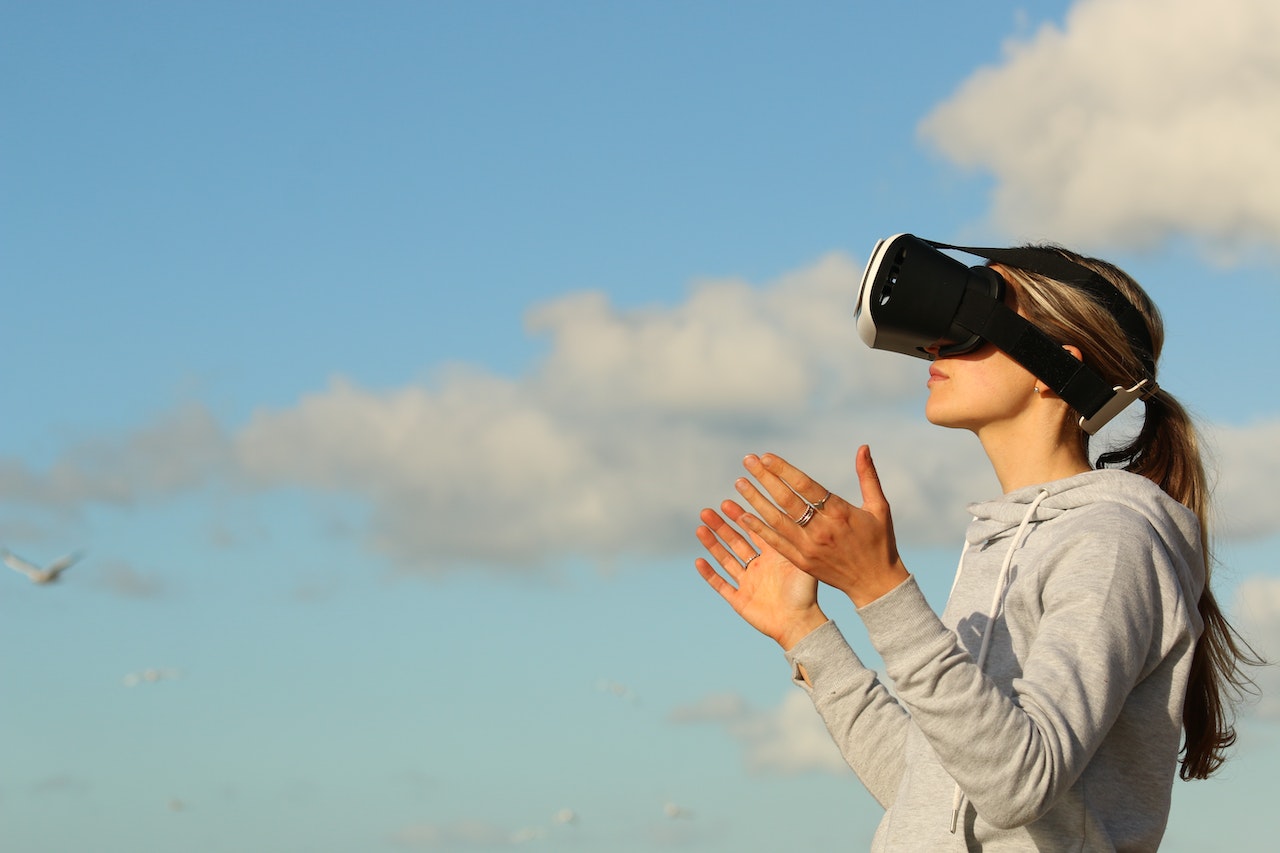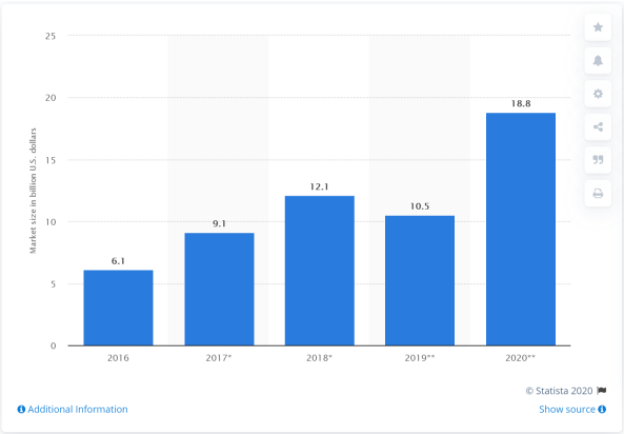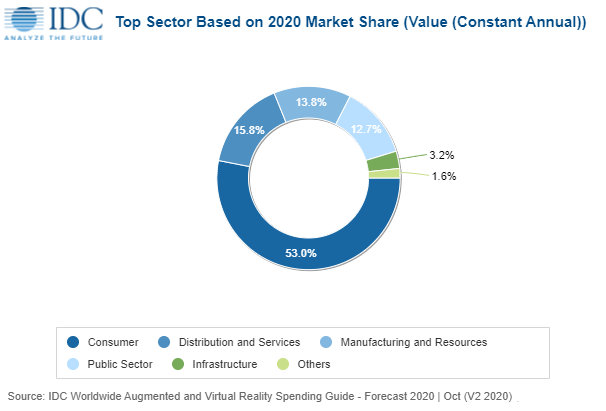Virtual Reality
Dec 02, 2020

Ever since the invention of augmented reality came into play on mobile devices, virtual reality has been making a breaking innovation in compatibility, portability, speed, and accuracy. Virtual reality can be described as a simulated experience to which can be portrayed as entering another dimension, similarly to that of the real world. This can lead to exploring endless possibilities from interacting with implicit objects to real-life items, compared to a hologram. Some applications of virtual reality include entertainment and educational purposes. Consequently, augmented reality and extended reality are a few of the virtual reality experiences being developed to this day. Popular virtual reality headsets include Facebook Oculus Quest 2, Sony Playstation VR, and HTC Vive Cosmos. To demonstrate, certain organizations take this technology and imply it to real-world problems, for producing better results and customer satisfaction. In other words, companies adapt virtual reality alongside augmented reality for testing each developmental environment in production, before sending it out to the real world. This can ensure that each successful test, when passed without production problems, can then be implemented onto the real-world application before a product is widely available to the general public. Moreover, Pfinder, a real-time tracking system, has performed reliable tests on multiple people throughout different locations by using a multiclass statistical model of color and shape. Consequently, this system is capable of segmenting a person from a background scene, to which it then finds and tracks a person’s movements in a range of viewing conditions. On the other hand, researchers at Indiana University Bloomington, developed a way for face tracking capabilities in virtual reality for use in a perceptual user interface by applying computer vision. Their research implies that the CAMSHIFT algorithm is integrated into a computer interface for controlling commercial computer games and immersive 3D graphic worlds. A company in China is taking Artificial Intelligence and Machine Learning components onto a new branch of virtual reality, called inverse virtual reality(IVR). This system has the capacity to subcontain the intelligence-driven virtual reality and the physical reality, adequately suitable for building an intelligence-driven mutually mirrored world. Below is a data screenshot of the current VR/AR Market Size in the world.

Similarly, augmented reality can leverage the full space for an environment by the creation of immersive experiences. As certain objects tend to move far away from the field of view, the efficacy and usability from different interaction modalities are subject to change. Augmented reality is geared more towards users being able to interact with their surrounding environment by adopting technology capable of superimposing information, without necessarily being involved with computer generated environments as seen with virtual reality. Augmented reality can enhance each user’s senses with images, information and audio. Whereas, on the other hand, the primary focus for virtual reality is to generate an immersive experience to which users can interact with one another in a virtual environment identical to the outside surroundings. Virtual Reality can offer the enticing premise of a rich sensory experience. Virtual reality consists of three important premises: immersion, interaction, and imagination. In general, most people would like to experience changes occurring on the screen from their response signals being retrieved by the commands inputed within the simulation.
One of the ways virtual reality is making an impact is through the adoption of wearable technology, which aims in reducing a patient's anxiety, stress and medical disorders in healthcare. Furthermore, medical imaging VR is geared towards providing better planning support in a patient's safety by reducing their overall dose of radiation exposure. To demonstrate, within the cath lab, there is a paradigm shift underway on how a physician can interact with their environment. They can then use their knowledge in assisting each patient virtually through a virtual screen without necessarily looking at a computer monitor the whole period. This can allow each process to move faster, efficient, and more intuitive compared to the better well-known standardized way. Moreover, virtual reality can bring a completely new era of interactivity, experience with friends and family members.
The Future of VR Technology
Virtual Reality is expected to grow by a 15.5 billion euro investment. In addition, companies will be able to transform their digital infrastructure plans into this area of technology which can exceed that of the consumer sector. Whereas, the demand for virtual reality technology is projected to skyrocket beyond leisure, tourism, and marketing, where there is user affordability. However, virtual interfaces should first be fixated in order to minimize side effects, which can include motion sickness, dizziness, etc.Businesses have been gaining traction into this hot field of technology, and will tap into opportunities it can present. Some of the big tech companies have started to develop virtual reality headsets capable of wireless connectivity for providing a better user experience including the removal of unnecessary cables and HD images. Some speculations have argued that Artificial Intelligence is expected to be integrated into all virtual reality headsets, and 5G connectivity. In addition, virtual, augmented and mixed reality is expected to be a $150 billion market by the year 2020. Below is a representation of American’s views on virtual reality devices.

As you can see more and more people are starting to gain interest in owning a VR device. On the other hand, 2020 has become a major turning point where enterprises and organizations across all verticals are embracing the unarticulated need for augmented, mixed, and virtual reality. With an increase in stay-at-home orders due to the COVID-19 pandemic, many small and large enterprises are realizing that a new tactic must be placed for providing the same experiences accomplished at these locations. Here is a depiction of the latest top sector market share as of lately.

In summary, virtual reality has become increasingly accessible with developments in technology, making headsets and software development more common to meet education and training needs. In contrast, virtual reality has a potential in conceiving immersive experiences by compelling people to believe in physical preset while being locked in a virtual space. Some common types of virtual reality implementations include non-immersive, semi-immersive and full-immersive scenes. With rising technologies, and major improvements in the user experience, virtual reality is expected to adapt into the field of science and technology, and lead us to advances that will shape our future. In conclusion, virtual reality is capable of conceding connectivities with more devices and larger user bases. In addition, it's almost imperceptible latency will adjust the consumer's output to obtain images in real time, just as they are witnessing them with their own eyes.